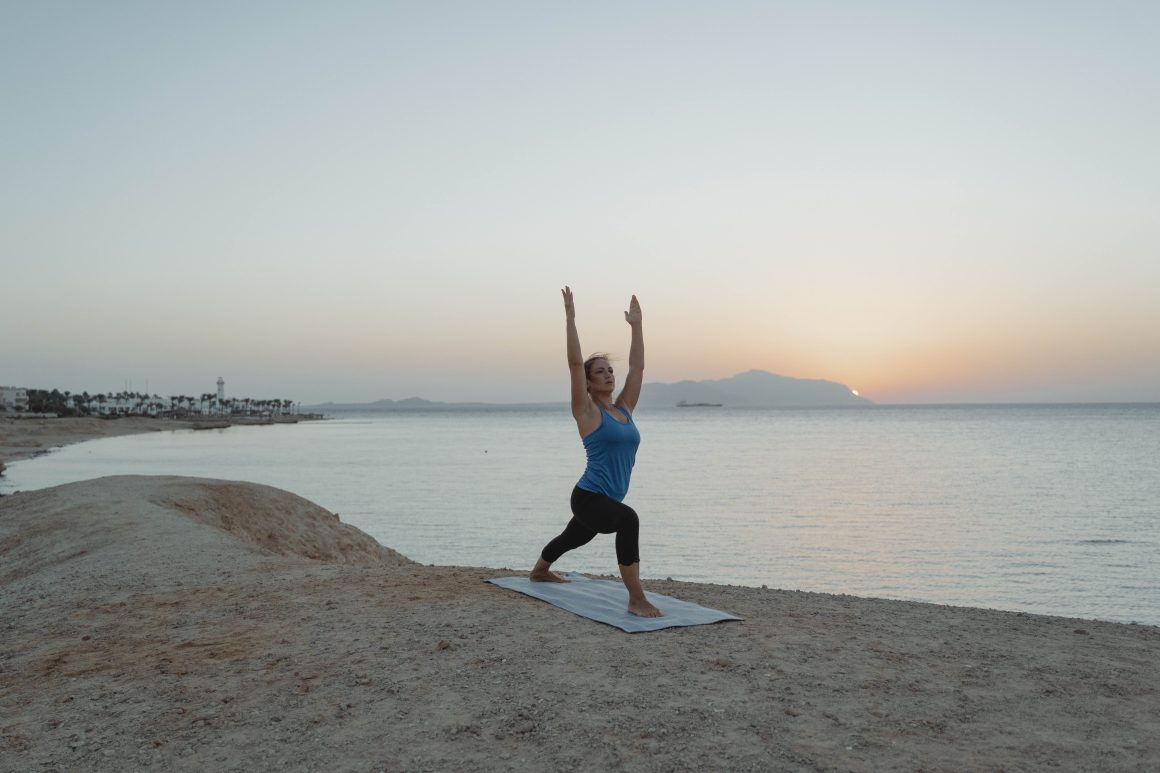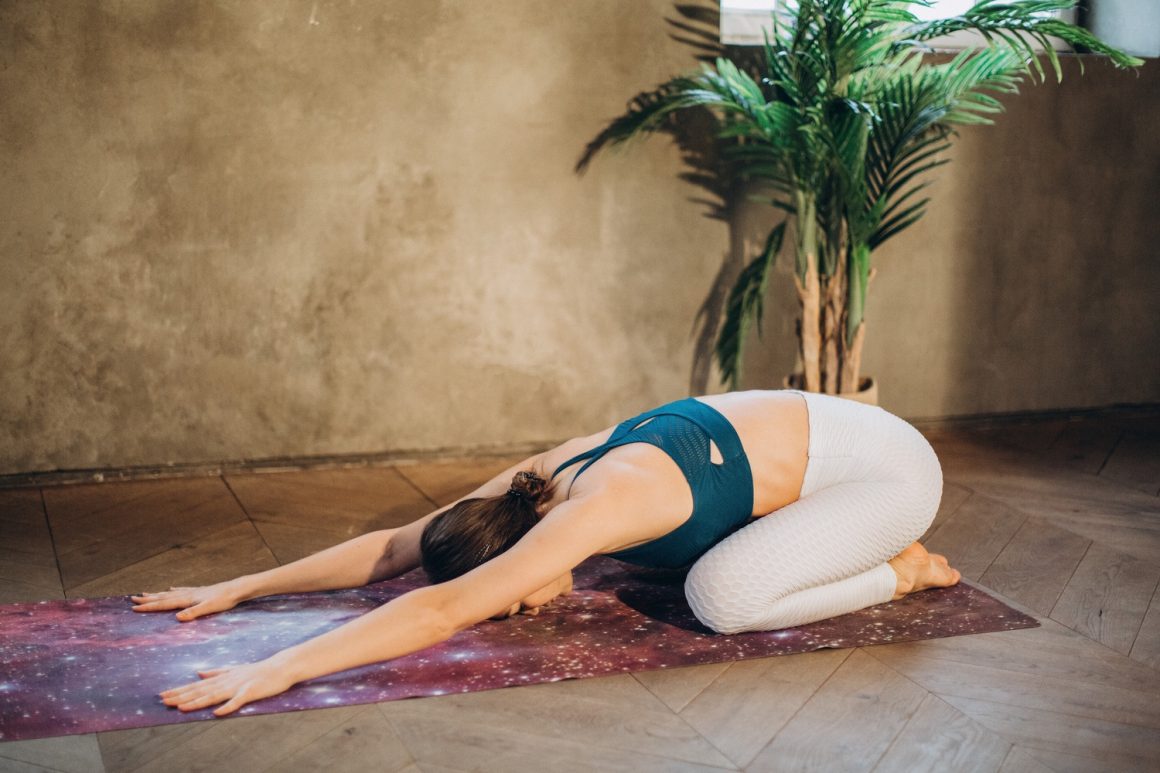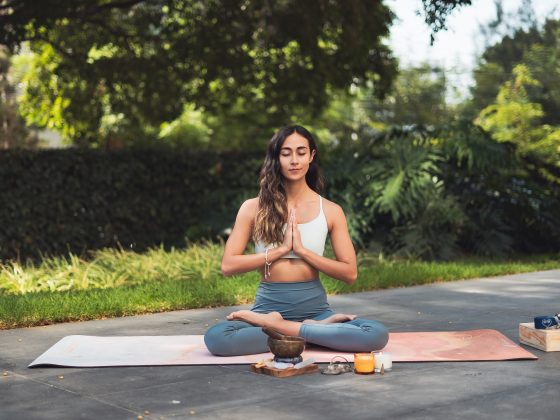We know that if you are in the beginning of your yoga journey, many poses, their names, and the different styles may feel daunting. But, once you become acquainted, some poses start to feel like your comfort zone. With this blogpost, we would like to introduce you to 5 basic yoga poses that you should know. Let’s get started!
Mountain Pose (Tadasana):
Tadasana, also known as “Mountain Pose,” is a standing yoga pose that is considered to be the foundation for all standing poses in yoga. It is performed by standing upright with the feet together and the arms at the sides. The body is aligned with the head held high and the shoulders relaxed. The gaze is directed forward, and the breath is slow and steady. Tadasana helps to improve posture, balance, and concentration, and it is often used as a starting position for other yoga poses. It is considered as basic yoga asana, and can be done by anyone, regardless of age or fitness level.
Warrior I (Virabhadrasana I):
Warrior I is a standing yoga pose that strengthens the legs, core, and arms while stretching the hips, chest, and shoulders. To perform the pose, begin in a standing position with your feet together. Take a large step back with your left foot, keeping the heel in line with the arch of your right foot. Turn your left foot out 90 degrees, and your right foot in slightly. Bend your right knee so that your thigh is parallel to the ground, and raise your arms overhead with your palms facing each other. Keep your shoulders relaxed and your gaze forward. The pose strengthens the legs, especially the quadriceps, and opens the chest, hips, and shoulders. It also helps to improve balance, focus, and concentration. It’s important to keep the front knee in line with the ankle and the back leg straight.

Downward-Facing Dog (Adho Mukha Svanasana):
Downward-Facing Dog is a popular yoga pose that is often used as a transition between other poses. The pose is performed by starting on all fours, with the hands shoulder-width apart and the knees hip-width apart. The hips are then lifted up and back, while the legs straighten, and the heels lower towards the ground. The head hangs between the arms and the gaze is directed towards the navel. The body forms an inverted “V” shape. It stretches the spine, shoulders, hamstrings, and calves and strengthens the arms and legs and helps to calm the mind and improve focus.
Cat-Cow Stretch (Marjaryasana-Bitilasana):
The Cat-Cow stretch is a gentle yoga stretch that is often performed as a warm-up or cool-down in a yoga practice. It is done by moving between two poses, the Cat pose and the Cow pose. The stretch is performed by starting on all fours, with the hands shoulder-width apart and the knees hip-width apart. To begin in the Cat pose, exhale and round your spine towards the ceiling while tucking your chin to your chest and pulling your belly button towards your spine. To move into the Cow pose, inhale and lift your head while allowing your belly to sink towards the mat and your back to arch in the opposite direction. Your tailbone should lift and your gaze should be forward.This sequence of movement can be repeated a few times, flowing smoothly between the two poses, allowing the spine to move through a full range of motion and stretch the back muscles.
Child’s Pose (Balasana):
Child’s Pose is a restorative yoga pose that is often used to relax and release tension in the body. To enter the pose, start on your hands and knees with your wrists directly under your shoulders and your knees directly under your hips. Sit back on your heels and then slowly lower your torso forward, stretching your arms out in front of you or alongside your body with the palms facing down. Rest your forehead on the ground and let your entire body relax.
This pose is a great way to release tension in the back, shoulders, and neck, as well as calm the mind. It also helps to stretch the hips, thighs, and ankles. It’s a great pose for beginners, and for people who have a hard time sitting still.

If you want to continue learning more about yoga poses and styles, We would love to accompany you with your journey. Do not forget, with regular practice, you’ll soon notice the physical and mental benefits of yoga. Namaste!





